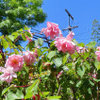Some specific RRD symptoms
michaelg
11 years ago
Related Stories

REMODELING GUIDES10 Signs You’re in the Middle of a Renovation
A renovation project allows you to choose every last detail for your home, but decision making can quickly go from ‘Ooooh’ to ‘Argh!’
Full Story
GARDENING GUIDESHow to Prune Your Flowering Shrubs for the Best Blooms
Less is often more when it comes to properly pruning flowering shrubs. Here’s what to do and why
Full Story
PETSPet-Proofing Your Home: A Room-by-Room Guide
Not all pet dangers are obvious. Keep furry friends safe and sound by handling all of these potential hazards
Full Story
SHOWERSSteam Showers Bring a Beloved Spa Feature Home
Get the benefits of a time-honored ritual without firing up the coals, thanks to easier-than-ever home steam systems
Full Story
PETSGarden Alert: 22 Plants to Keep Away From Pets
Avoid potential danger by keeping dogs and cats away from these landscaping and houseplant favorites
Full Story
GREEN BUILDINGEcofriendly Cool: Insulate With Wool, Cork, Old Denim and More
Learn about the pros and cons of healthier alternatives to fiberglass and foam, and when to consider an insulation switch
Full Story
GREEN BUILDINGThe Big Freeze: Inventors Break New Ground to Keep Things Cool
Old-fashioned fridges can be energy guzzlers, but there are more eco-friendly ways of keeping food fresh, as these global innovations show
Full Story
WORKING WITH PROS7 Tips for Making Contractors Your Allies
For a contractor as vested as you are in your home project's success, follow these time-tested techniques from a professional designer
Full Story
HEALTHY HOMEWhat You Need to Know About Dust and How to Fight It
Breathe easier with these 10 tips for busting mites, dander and other microscopic undesirables
Full Story
LIFEA Therapist’s Guide to Dealing With Conflict at Home
Piles of laundry and dirty dishes are a part of cohabitating. Here’s how to accept it and move forward
Full Story






henry_kuska
strawchicago z5
Related Discussions
Earliest symptoms of Rose Rosette Disease on Cornelia
Q
My first case of RRD? (picture heavy)
Q
Some photos of rrd and a little story
Q
Can someone help identify this issue *new symptoms*
Q
strawchicago z5
michaelgOriginal Author
strawchicago z5
strawchicago z5
buford
henry_kuska
sergeantcuff
strawchicago z5
henry_kuska
anntn6b
henry_kuska
henry_kuska
User
henry_kuska
michaelgOriginal Author
strawchicago z5
anntn6b
henry_kuska
henry_kuska
strawchicago z5
anntn6b
henry_kuska
henry_kuska
henry_kuska
anntn6b
henry_kuska
henry_kuska
User
anntn6b
strawchicago z5
strawchicago z5
User
henry_kuska
stealthecrumbs
michaelgOriginal Author